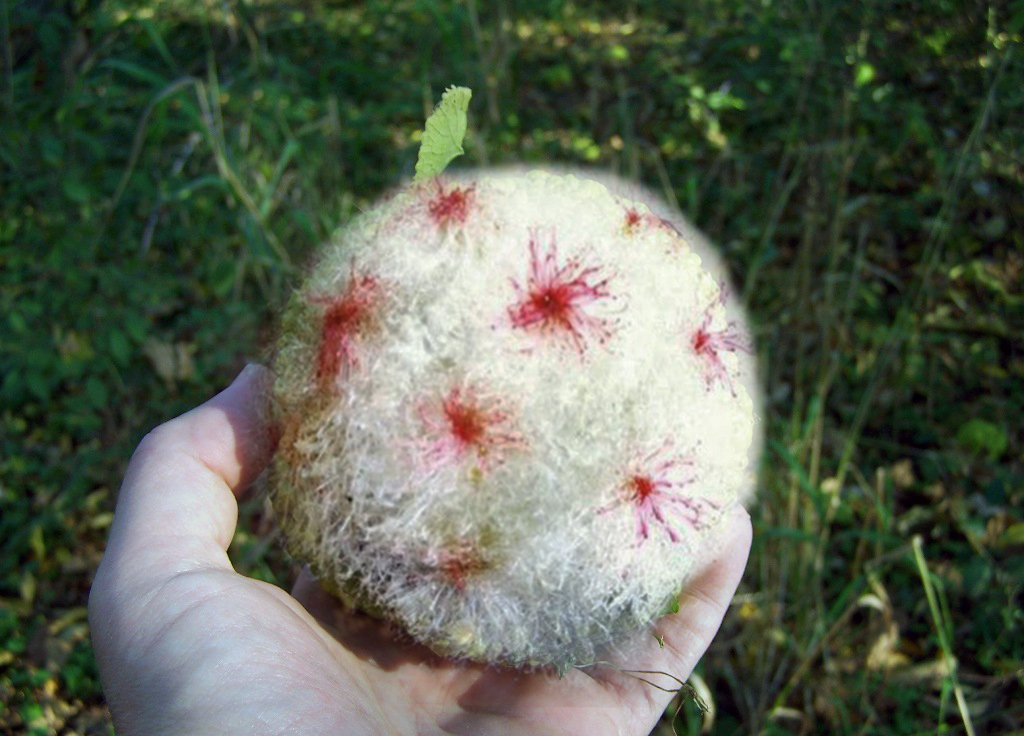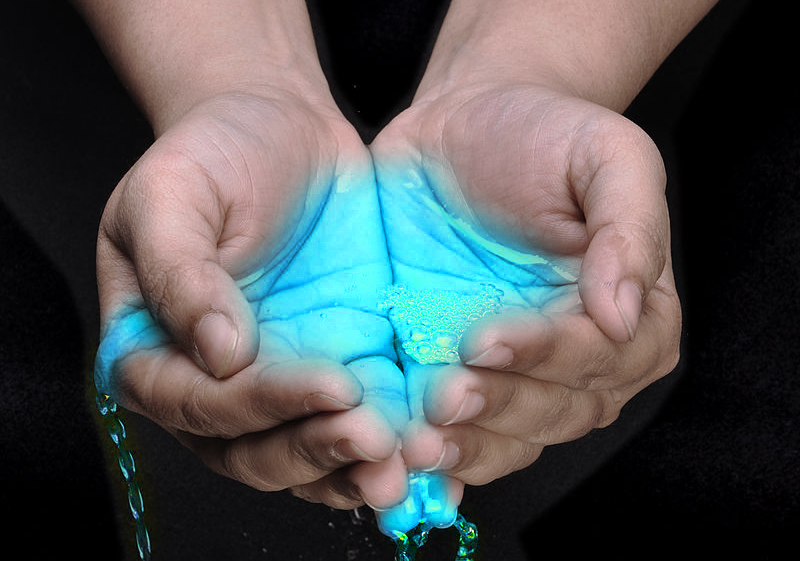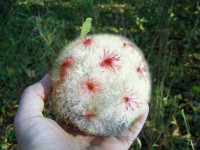Clickbait: This One Weird Article Will Explain It

If you’ve clicked on this article hoping to learn more about the mysterious image above of the furry ball above, then you’ve just fallen for clickbait. Since the purpose of this article is to explain clickbait and not to lure people to this website using clickbait tactics, then the explanation for the image above is just a wool sower gall from an oak tree that has been Photoshopped onto an osage orange.
Seeing as how prevalent clickbait is on the Internet, you may be wondering how it works, what the different types of clickbait are, and if it’s ethical or not.
What Types Of Clickbait Are There?
Before I get into how clickbait works, you may be wondering how many types of clickbait there are. On the Internet, you’ll often see 2 types of clickbait: headlines and images.
Clickbait Headlines
Clickbait headlines are common on Facebook and are often used by Facebook pages belonging to BuzzFeed and the Huffington Post. They often use overly-exaggerated tones (e.g., Uh-oh, what’s going on over at the white house will shock you! It sure shocked me!)
Traits of a clickbait headline include:
- Overly-exaggerated tones (e.g., Uh-oh, what’s going on over at the white house will shock you! It sure shocked me!)
- Teenage colloquialisms (e.g., Yo brahs, check this out!)
- Specific numbers (Find out how this teen mom makes $7,564.76 a day!)
- Specific references to a list (e.g., 20 things you didn’t know about Obama. Number 23 will shock you!)
- Annoying call-to-actions (e.g., you need to click here and check this out right now!)
- Vague titles (e.g., this one weird trick will explain everything).
Clickbait Images
Clickbait images work to pique your interest by using interesting colours and a theme chosen by the author (it could be sexual, foreign, or something else). These images sometimes employ other tactics, such as cropping an image of a women in a bikini to make the user curious to see what’s below.
Traits of a clickbait image include:
- Unidentifiable objects
- Sexualised images
- Cropped images
- Misleading Photoshopped images
How Does Clickbait Work?
Clickbait works by fuelling your curiosity. In the case of headlines, some of them are actually tailored for their target audience (for example, teenage colloquialisms will be used on articles that target a teenage audience). When images are concerned, they usually use interesting colours coalesed with one if the trats mentioend in the Images section of this article. Take the image below as an example:

Is Clickbait Ethical?
This is a personal opinion, but I believe it depends on this situation. Assuming the title is relevant to the article, I don’t have much of an issue with it. If a clickbait article uses similar images to ones in this article without ever bringing them up in the article, then I usually deem the article as misleading and the website as misleading for using shoddy Online marketing tactics.
Related Articles:
- Blogging Techniques: What Are Pillar Articles?
- What Are Backlinks? Here’s A Basic Explanation
- Are Link Building Services Black Hat or White Hat?
- What You Need To Know About SAPE Links
Other Websites:
For the history of clickbait, read “The Clickbait Conundrum” on HubSpot.
- Slow Website? Consider Robots As Being The Culprit - June 24, 2025
- My Experience Accepting Crypto Payments For The First Time - April 25, 2025
- Are Forums Dying? A Look Into Forums As A Whole - April 22, 2025

